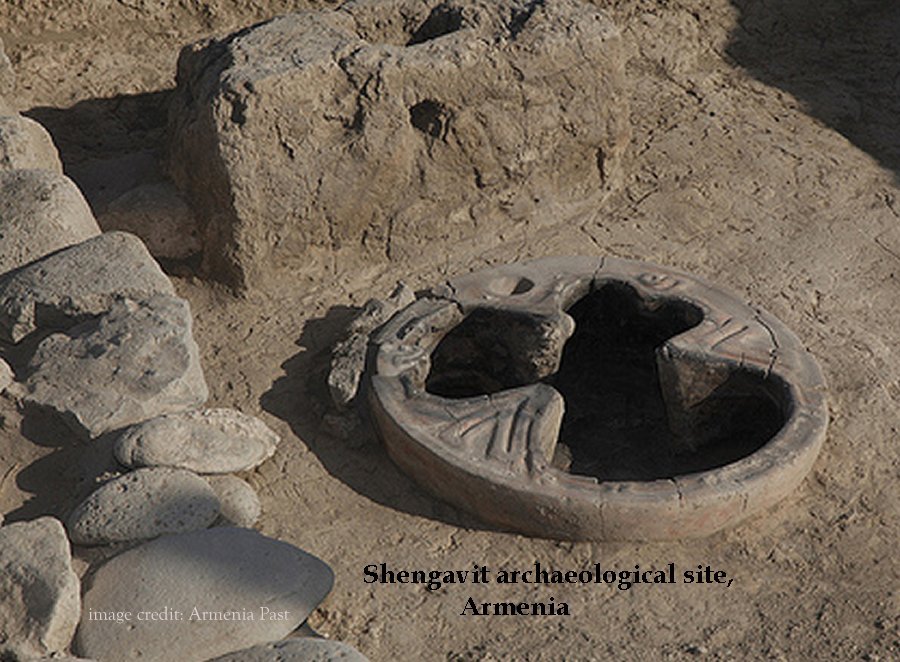Shengavit Of Kura Araxes Culture: One Of Armenia’s Historical Sites Inhabited Since At Least 3200 BC
A. Sutherland - AncientPages.com - One of the most prominent historical sites of Kura Araxes (Uraxes) culture, dating from 3400 BC to 2000 BC, is the Shengavit settlement, located just beyond the suburbs of the city of Yerevan, Armenia.
The Kura-Araxes culture (3400-2000 BCE). Although the Kura-Araxes people were less aggressive and more sedentary, they also underwent a significant expansion, first west to Anatolia, south to the Fertile Crescent, and east toward the Iranian plateau to Pakistan, where they would have influenced the Indus Valley Civilisation.
The area of modern-day Shengavit has been inhabited since at least 3200 BC, probably, late Neolithic 3500-3000 BC). The site was excavated and relatively well studied by archaeologists who revealed findings attributed to many cultures that existed during the very long time from 4,000 to 2,000 BC.
People had developed agriculture, ranching, cattle breeding industry, reprocessed agricultural produce, and possessed equipment for corn milling. The city had unique food storage and depository of wheat, housing 4 tons of crops.
The excavations at the ancient Shengavit revealed a large set of tools and bronze artifacts, which confirm that Shengavit was a town with prospering agriculture and well-developed craft, including spinning looms, bone spindle whorls, looms, seals, marble, and onyx scepters.
People also worked as craftsmen creating pottery and skilled metalworkers. It is believed that copper smelting may have taken place in ancient Shengavit.
The settlement's highly developed architecture included defensive, economic, administrative, residential, and spiritual buildings.
One example is a rectangular semi-subterranean temple-like building, a temple with a low altar with a hole that may have held a wooden figurine and terracotta hearths, and a place for keeping the sacred fire during rituals.
Square M5 room with ritual emplacement and symbols buried near it. Source
The ruins of the city area, located on an irregular-oval platform built on a slope, are approximately 6 ha and are still surrounded by a wall with cyclopean towers constructed of vast and uncut stones from basalt without mortar. Under the northern part of the wall is an underground passage leading directly to the river Hrazdan and on the south side, there are traces of a filled moat.
When Shengavit was a flourishing center, it had the best defensive system.
People lived in round (sometimes rectangular) dwellings about 6 to meters in diameter and built at a distance of 7.3 meters from each other. Still, they were connected with the last wall of the adjacent buildings.
Their walls had a stone base, on which raw brickwork increased. A round, decorated clay fireplace - usually located in the house's center–had an essential economic and ritual role.
The walls of both round dwellings and rectangular buildings from inside and outside were plastered with clay. The round homes - covered with rubbles - had a corridor entrance opened from the east side.
Shengavit's ancient burial places were found outside the walls of the city. Each unearthed tomb had a place for 10-12 people, burial property, tools, goods, black clay pots, flint and obsidian, copper armlets, earrings, and beads.
According to one theory, Shengavit's burial area was once inside the walled city. Later, for unknown reasons, the city was confined to a smaller place within the walls, and the abandoned area became a burial place dated 3,000 BC.
Written by – A. Sutherland AncientPages.com Staff Writer
Updated on October 29, 2022
Copyright © AncientPages.com All rights reserved. This material may not be published, broadcast, rewritten or redistributed in whole or part without the express written permission of AncientPages.com
Expand for referencesMore From Ancient Pages
-
 Ancient Indian Sages Had Highly Advanced Scientific Knowledge Thousands Of Years Ago
Ancient Technology | Mar 18, 2019
Ancient Indian Sages Had Highly Advanced Scientific Knowledge Thousands Of Years Ago
Ancient Technology | Mar 18, 2019 -
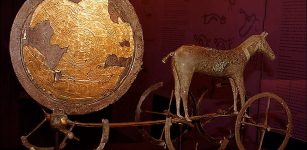 Sun Chariot – Powerful Symbol Of Bronze Age Cosmology
Ancient Symbols | Feb 28, 2018
Sun Chariot – Powerful Symbol Of Bronze Age Cosmology
Ancient Symbols | Feb 28, 2018 -
 On This Day In History: Naval Battle Of Porto Bello Begins – On Nov 20, 1739
Featured Stories | Nov 20, 2016
On This Day In History: Naval Battle Of Porto Bello Begins – On Nov 20, 1739
Featured Stories | Nov 20, 2016 -
 Laocoon – A Trojan Priest Who Offended The Gods And Was Strangled By Sea Serpents
Featured Stories | Nov 15, 2021
Laocoon – A Trojan Priest Who Offended The Gods And Was Strangled By Sea Serpents
Featured Stories | Nov 15, 2021 -
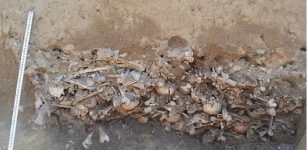 19th Century Mass Grave With Hundreds Decapitated “Vampires” Discovered In Polish Village
Archaeology | Jun 23, 2023
19th Century Mass Grave With Hundreds Decapitated “Vampires” Discovered In Polish Village
Archaeology | Jun 23, 2023 -
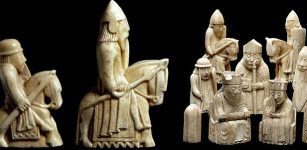 Mystery Of The Beautiful Viking Uig Chessmen Found On The Isle Of Lewis, Scotland
Artifacts | Dec 14, 2015
Mystery Of The Beautiful Viking Uig Chessmen Found On The Isle Of Lewis, Scotland
Artifacts | Dec 14, 2015 -
 Unexplained Phenomena Reported Around Mysterious Scandinavian Mountain
Featured Stories | Mar 16, 2025
Unexplained Phenomena Reported Around Mysterious Scandinavian Mountain
Featured Stories | Mar 16, 2025 -
 Has The Mystery Of The Lost Trading Ship Zuytdorp Been Solved?
Archaeology | Dec 11, 2024
Has The Mystery Of The Lost Trading Ship Zuytdorp Been Solved?
Archaeology | Dec 11, 2024 -
 Clues To The Mysterious Dog-Headed St. Christopher And His Connection To The Egyptian Jackal God Anubis Found?
Featured Stories | Jan 14, 2025
Clues To The Mysterious Dog-Headed St. Christopher And His Connection To The Egyptian Jackal God Anubis Found?
Featured Stories | Jan 14, 2025 -
 On This Day In History: Michael Servetus Burned At The Stake ‘Atop A Pyre Of His Own Books’ – On Oct 27, 1553
News | Oct 26, 2016
On This Day In History: Michael Servetus Burned At The Stake ‘Atop A Pyre Of His Own Books’ – On Oct 27, 1553
News | Oct 26, 2016 -
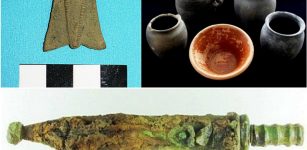 Rare Roman Brooch And A Miniature Sword – Unearthed
Artifacts | Jan 18, 2016
Rare Roman Brooch And A Miniature Sword – Unearthed
Artifacts | Jan 18, 2016 -
 31,000-Year-Old Skeleton Missing Foot May Show Oldest Amputation
Archaeology | Sep 7, 2022
31,000-Year-Old Skeleton Missing Foot May Show Oldest Amputation
Archaeology | Sep 7, 2022 -
 Unearthing South Australia’s Oldest Known Shipwreck: The Bark South Australian (1837)
Archaeology | Aug 16, 2023
Unearthing South Australia’s Oldest Known Shipwreck: The Bark South Australian (1837)
Archaeology | Aug 16, 2023 -
 Ephemeral Evidence Of Mediterranean Mobility – Boats, Migration, And The Central Mediterranean Passage In Focus
Archaeology | Dec 23, 2021
Ephemeral Evidence Of Mediterranean Mobility – Boats, Migration, And The Central Mediterranean Passage In Focus
Archaeology | Dec 23, 2021 -
 Secrets Of Mica Chambers Of Teotihuacan
Ancient Technology | Jun 12, 2020
Secrets Of Mica Chambers Of Teotihuacan
Ancient Technology | Jun 12, 2020 -
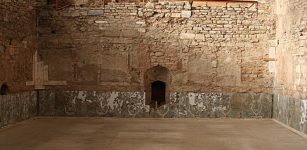 Marble Slab Production During Roman Imperial Time Was Much More Efficient Than It Is Today
Archaeology | May 14, 2021
Marble Slab Production During Roman Imperial Time Was Much More Efficient Than It Is Today
Archaeology | May 14, 2021 -
 First Insight Into 3,500-Year-Old Cuisine Of The Enigmatic Nok Culture
Archaeology | Jan 17, 2022
First Insight Into 3,500-Year-Old Cuisine Of The Enigmatic Nok Culture
Archaeology | Jan 17, 2022 -
 Manuscripts And Art Support Evidence That Syphilis Was In Europe Long Before Explorers Could Have Brought It Home
Featured Stories | Jul 15, 2022
Manuscripts And Art Support Evidence That Syphilis Was In Europe Long Before Explorers Could Have Brought It Home
Featured Stories | Jul 15, 2022 -
 God Dagda – A Powerful Leader Of The Tuatha De Danann In Celtic Mythology
Celtic Mythology | May 30, 2020
God Dagda – A Powerful Leader Of The Tuatha De Danann In Celtic Mythology
Celtic Mythology | May 30, 2020 -
 Caribbean Silk Cotton Tree And Its Dangerous Spirits In Myths And Legends
Featured Stories | Jan 29, 2024
Caribbean Silk Cotton Tree And Its Dangerous Spirits In Myths And Legends
Featured Stories | Jan 29, 2024






